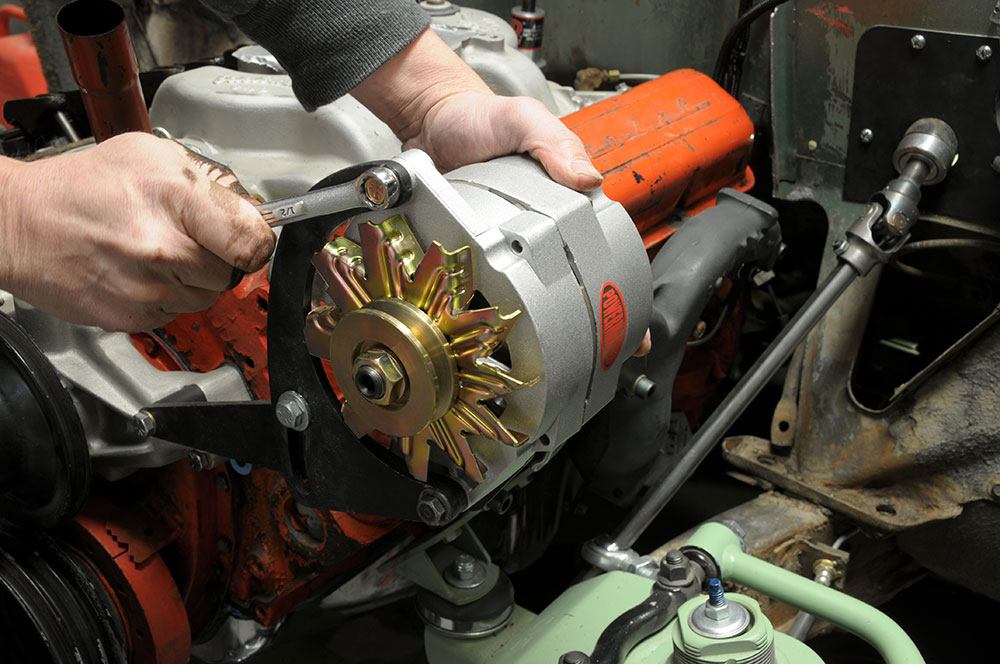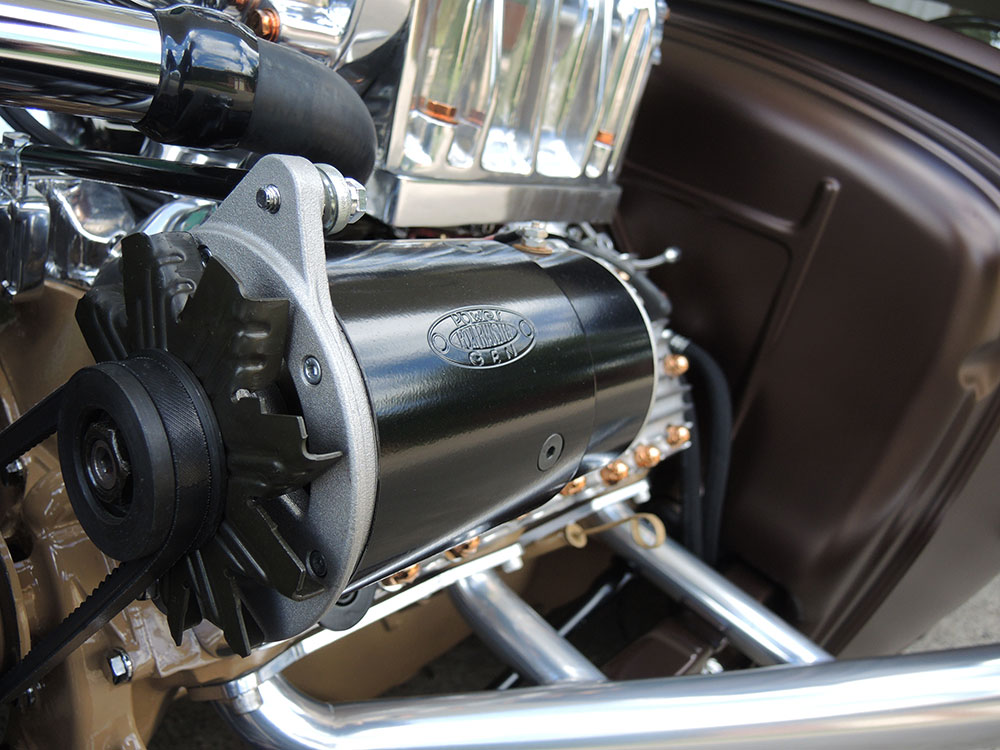Powermaster’s New Line of HPR Alternators
By Todd Ryden – Photography by the Author
Choosing and installing an alternator sounds easy enough, right? In the old days you simply bolted in the new (or rebuilt!) unit, connected the wires, and tightened the belt to where it had an inch or two of deflection and done. Alas, those days are long gone, along with a factory “high-output,” 50-amp alternator.
Today, you likely need at least twice as much output to power the growing list of electronic controls on a modern-built classic truck. We’re talking about electric fans, fuel pumps, HVAC systems, EFI, and more modern amenities. With increased output requirements also comes more pressure on your wiring connections, cables, and grounds, not to mention belt and pulley choices.
It’s important to note that the alternator is producing the electricity your vehicle needs while it is running, not the battery. The battery’s main function is to act as a reserve storage of electricity that is primarily used to get the engine started. Once running, the alternator is tasked with maintaining the battery at its full capacity as well as powering everything on the vehicle that requires voltage. If you’re using more than the alternator is capable of producing, well, you’ll be on the side of the road eventually, or as a best case, sitting in a parking lot waiting for a jump.
Read More: How To Install A Universal Wiring Harness Kit
Choosing an alternator sounds easy enough, but before clicking the “Buy Now” button, it’s best to take note of just how much current your classic truck needs to keep you cruising on the road for thousands of miles. This is easily accomplished by making a list of the electronic components on your classic truck; you’ll be surprised how quickly they add up.
Current Requirements
Most components have their current use specifications on the manufacturer’s website or the instructions, but to give you an idea, a standard electric fuel pump will use at least 10 amps and more for higher-output versions (use 10-20 to be safe). Typical headlights and tail lamps use 5-6 amps (up to 10 amps for a Halogen and HIDs), a single electric fan can pull 30-40 amps, air conditioning up to 20 amps, air compressors for suspensions, power windows, and so on all add up quickly.

Yes, every component may not be running all at once, but it’s better to be prepared, and you should always select an alternator that exceeds the max current requirements. Once you have a feel for the output requirements your classic truck needs, don’t just pick the highest-rated alternator—you need to consider the rpm range of the alternator’s output.
Most alternators are rated at their highest output possible, which generally occurs at its top rpm. For example, a 140-amp may only produce that amount at 5,000 rpm (engine), but only about 70 amps when your engine is cruising at 1,800 rpm at 60 mph thanks to that overdrive transmission. An alternator’s output is not linear! If the alternator is putting out 60 amps at idle yet you’re using 100 amps with your AC and the electric fan is running while waiting to pull into the cars and coffee show, well, you can figure out the result.
Powermaster’s new line of Hairpin Replacement (HPR) alternators are designed with low-rpm output in mind. They offer two series: a smaller unit designed to bolt in place of common alternators from the ’60s-’80s and a larger model for late-model engine swaps, including Coyotes, LS/LT engines, and even Hemis. The smaller frame HPRs produce over 145 amps while the larger units deliver a stout 195 amps at idle speeds (with 175 and 245 amps at higher rpm).
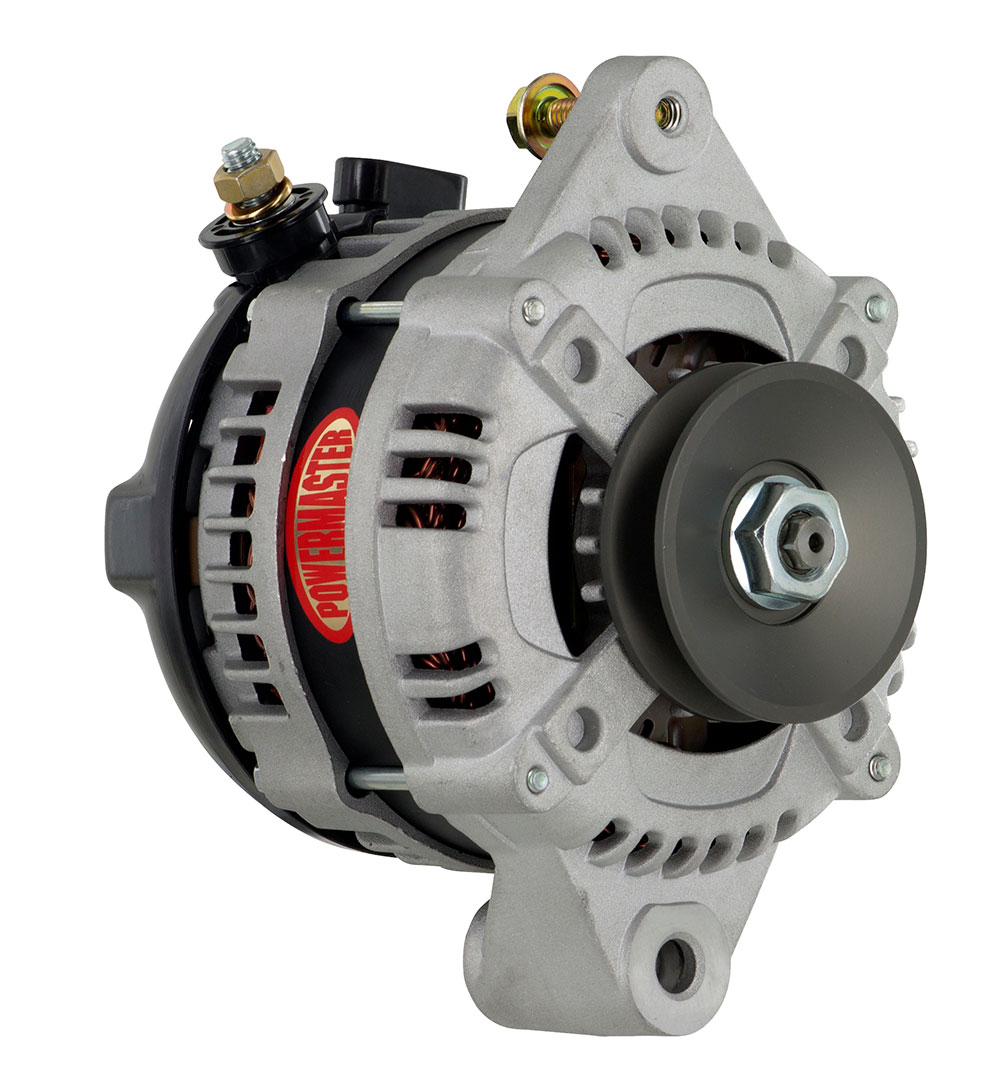
It is always important to ask the alternator manufacturer the output at idle, mid, and high rpm. This is very important and quite different between a street cruiser or a high-rpm road race truck. In most cases, there will be many choices to fit your current requirements, but if you’re running something unique, you can consider the pulley diameters to tailor the rpm that the alternator runs.
Pulley Ratio
As mentioned, the output of an alternator is dependent on the speed at which it is driven, just like tire diameter and rear end gearing. Pulley ratio is the comparison of the crank pulley diameter with that of the alternator pulley. The ratio is the result of dividing the diameter of the crank pulley by the alternator pulley. As an example, a 6-inch crank pulley used with a 2-inch alternator pulley comes out to a 3:1 ratio.
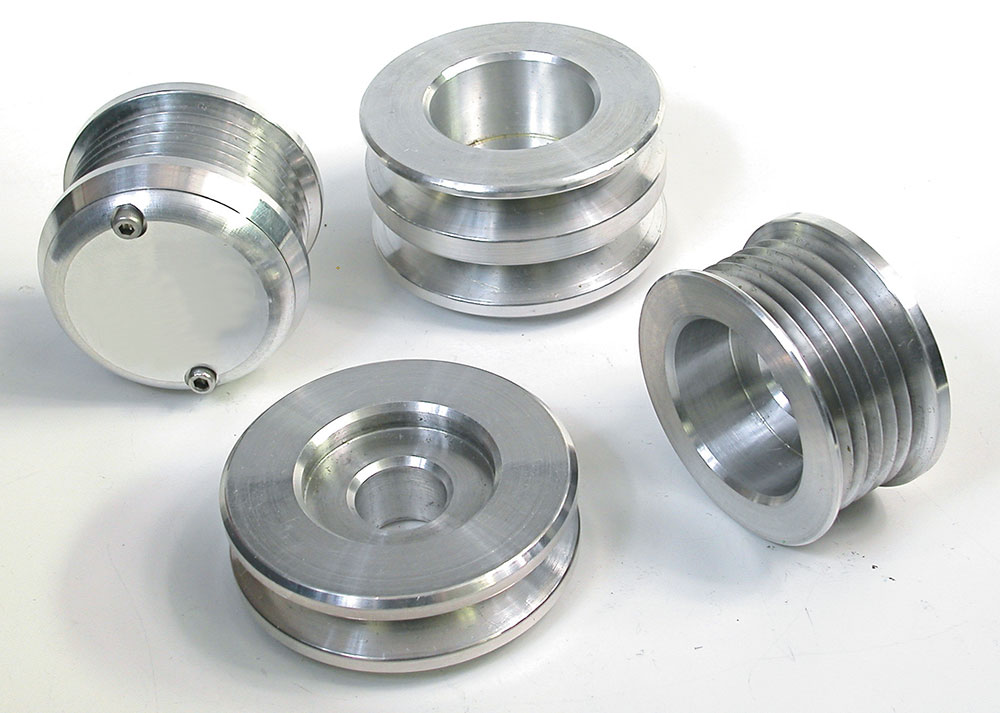
Read More: How To Install Classic Instruments’ New Bel Era III Gauge Panel
For street applications, a 3:1 ratio is a good target, which means that at an 800-rpm idle the alternator is running at 2,400 rpm. Conversely, at 6,000 engine rpm on the same setup, the alternator is spinning at 18,000 rpm! Running at that high of sustained rpm can take its toll on an alternator, which is why you see larger alternator pulleys on race applications. Short bursts of high rpm are OK but sustained screaming rpm will take a toll on the internal components of the alternator.
Charge Cables
With your current needs covered, there’s nothing left but to bolt in the new unit and connect the old charge cable, right? Not so fast! If you’re stepping up to a modern high-output alternator, do yourself a favor and update the charge cable and add a ground cable.
The charge wire on your truck is likely old and brittle, or was replaced with a box-store replacement cable designed to transfer 30-60 amps max. It’s like expecting your 100,000-mile TH350 transmission to handle your new 500hp LS engine. And when a charge cable can’t handle all of the new current it will get hot and hotter until it fails—which could go horribly wrong.
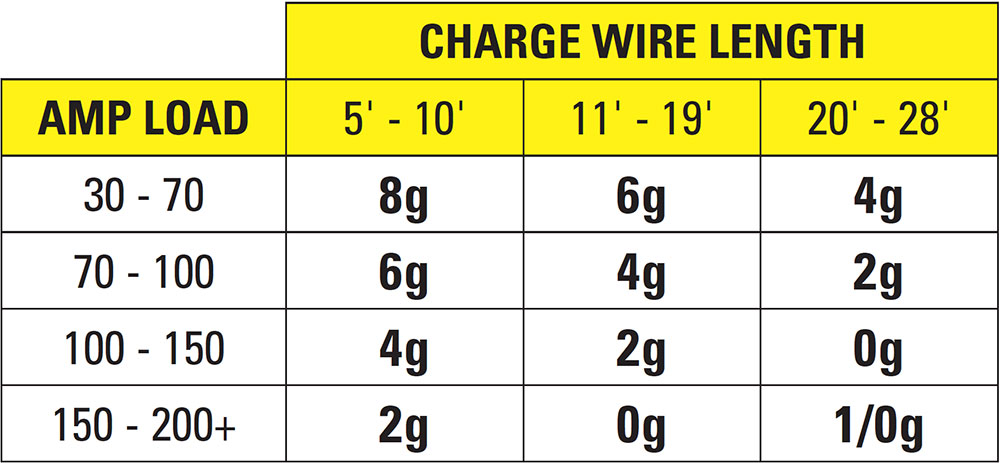
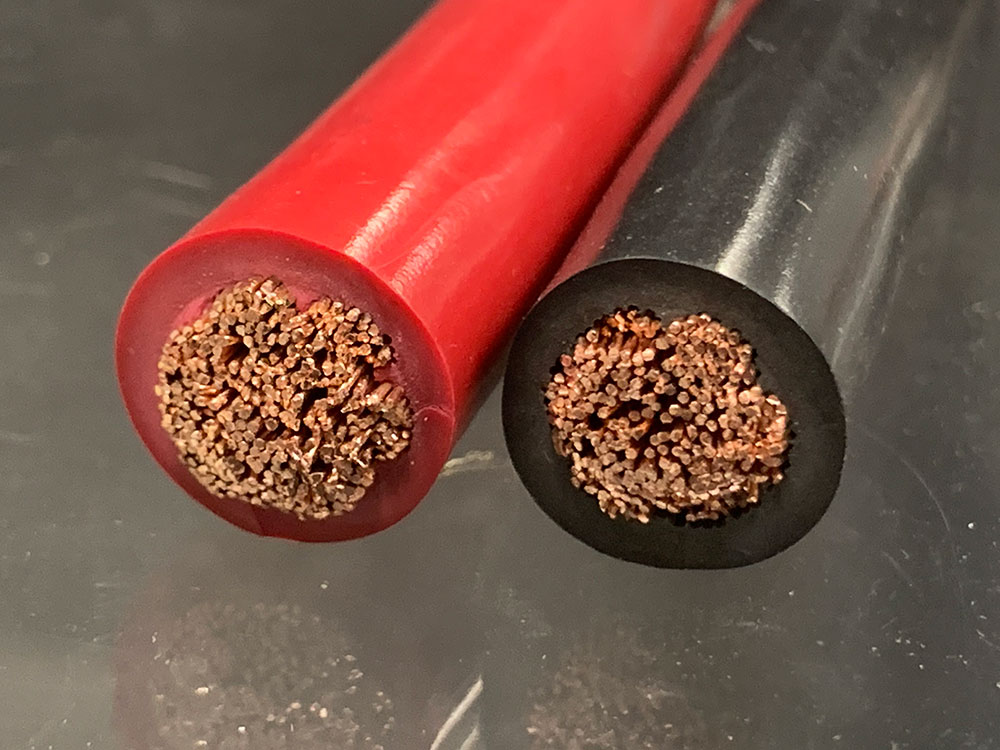 When upgrading the charge wire, you again need to consider the current requirements as well as the length of the wire. The thickness (gauge) is dependent upon these variables but the good thing is that you can’t really choose too big of a charge wire on the alternator. Always use a multi-strand, copper cable and you might as well go big to ensure years of flawless current flow.
When upgrading the charge wire, you again need to consider the current requirements as well as the length of the wire. The thickness (gauge) is dependent upon these variables but the good thing is that you can’t really choose too big of a charge wire on the alternator. Always use a multi-strand, copper cable and you might as well go big to ensure years of flawless current flow.

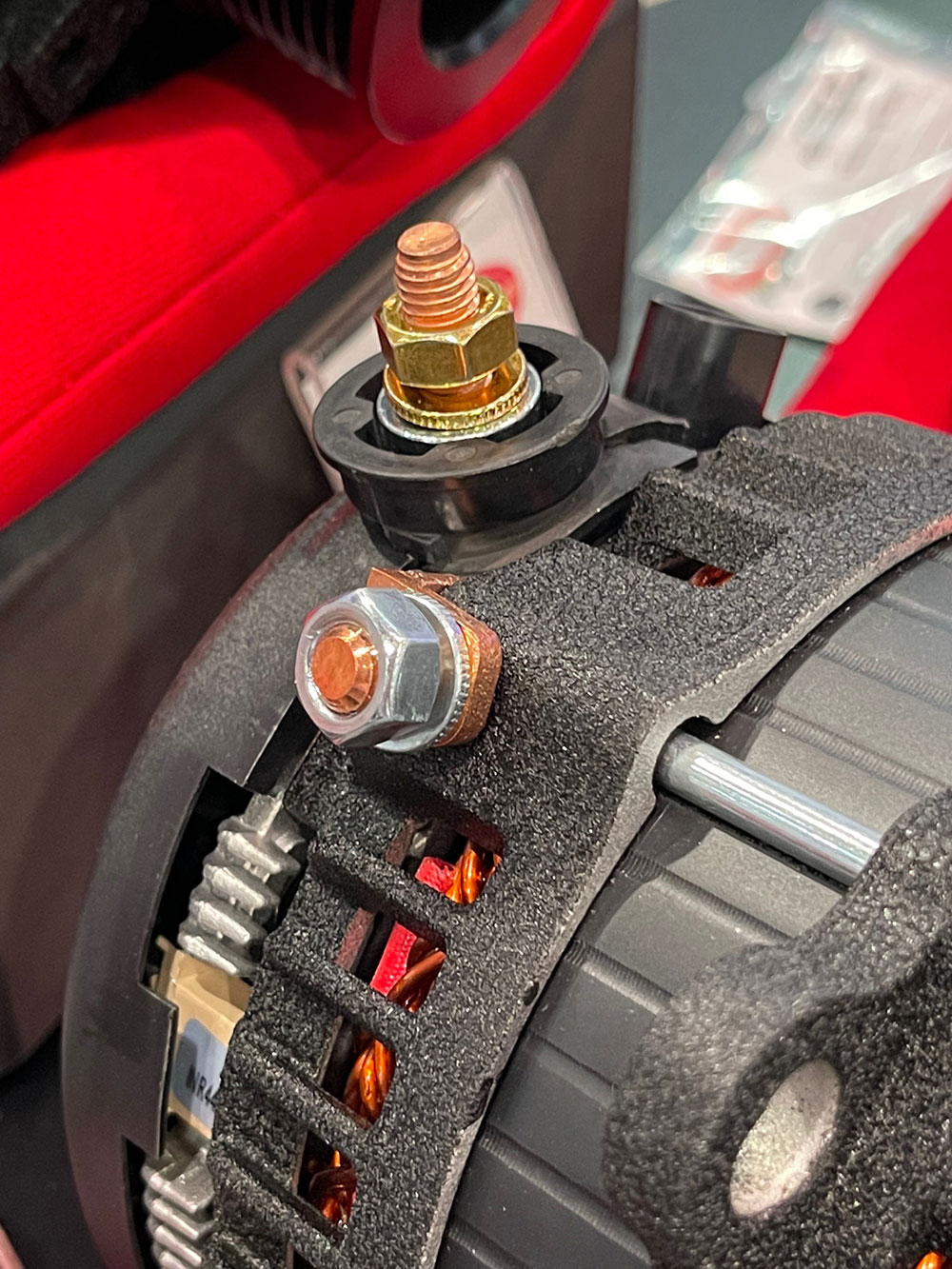 While you’re considering the charge wire, it will behoove you to add a ground wire from the alternator to the engine block or negative battery terminal. With the volume of electronics, having your vehicle grounded properly is key to the overall success of everything electronic on your hot rod. This is a good practice with any high-output alternator, but even more important due to brackets being painted or powdercoated, which creates a challenge for electrons to find a ground.
While you’re considering the charge wire, it will behoove you to add a ground wire from the alternator to the engine block or negative battery terminal. With the volume of electronics, having your vehicle grounded properly is key to the overall success of everything electronic on your hot rod. This is a good practice with any high-output alternator, but even more important due to brackets being painted or powdercoated, which creates a challenge for electrons to find a ground.
Adding Tension
A final consideration in selecting an alternator has to do with the pulley. Are you planning to run a V-belt or have you upgraded to a serpentine belt system? If you’re going with an aftermarket drive assembly, the pulley will be included, but for custom installations you need to be sure to choose the proper pulley, which also leads to considering the pulley diameter in relation to the crank pulley.
For standard V-belt applications, it’s time to ditch the deflection way of setting belt tension. A slipping belt causes heat and excessive heat is not something alternators like. Today’s high-output alternators need that belt to be good and tight! Bearing technology in the water pump and in the alternator produces much stronger units so there’s no need to worry about bearing damage from an over-tightened belt.

As you can see, there’s a bit more to selecting the right alternator for your hot rod application. None of this is difficult and it largely revolves around making sure you install and connect your new alternator with the best practices to ensure trouble-free installation. Also, once you know the type of unit you need, you can be sure the manufacturers offer several designs and coatings to make it look as good as it performs. Happy charging!
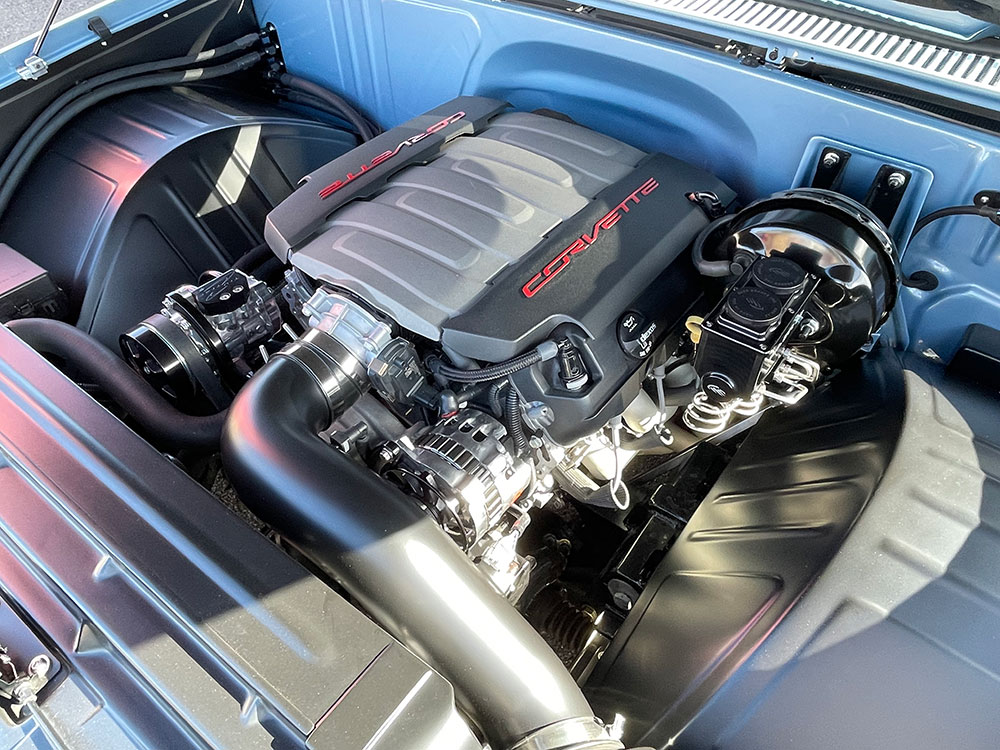
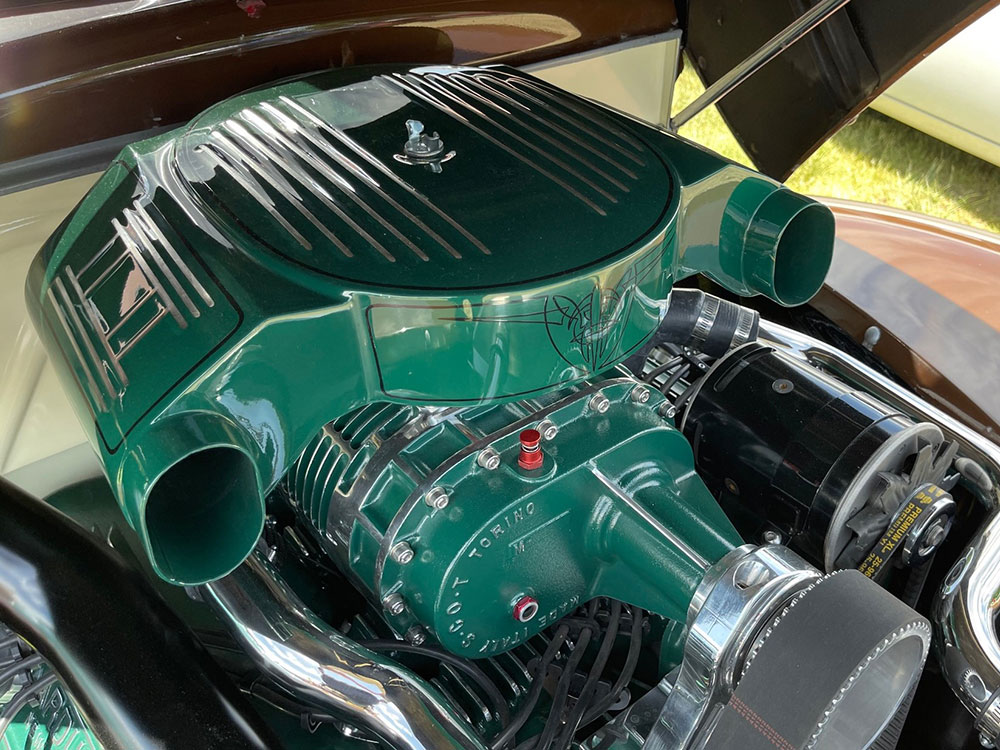
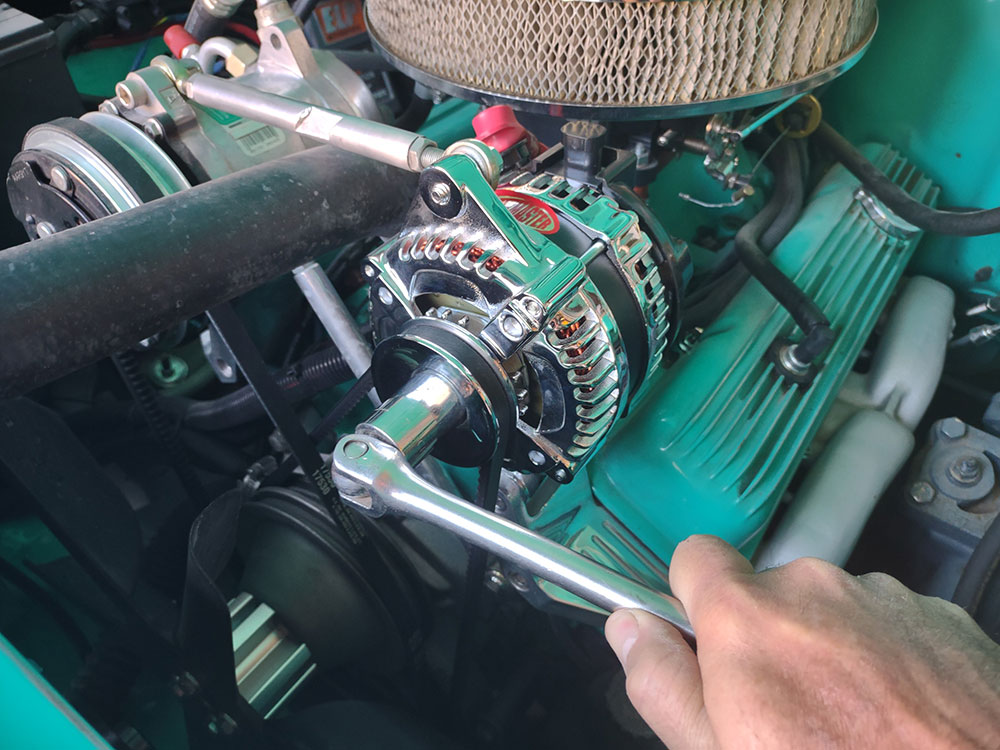
Read More: Engine Wiring for LS Engine Swaps
One Wire vs. Factory Connector
When you’re deciding on an alternator, one thing that may come up is to go with a one-wire alternator or stick with a factory plug-in style. From the factory, most alternators have a battery output terminal as well as a plug-in harness that could have two or up to four terminals. When the ignition key is turned on, the alternator is powered up through a 12V signal and ready to produce current as soon as the engine is turning. Other wires may be for a charge light on the dash, sensing the voltage for an external regulator, or even to power an electronic choke.
A one-wire alternator is exactly what it sounds like; hook up one charge wire from the alternator terminal to the battery positive post and done. These alternators use a unique internal regulator that basically “wakes up” once it senses rpm. Years ago, there were skeptics about one-wire alternators because they needed to see a certain rpm to start charging but today’s one-wire alternators start charging at very low engine rpm. For ease of wiring and cleaner installation, you can’t beat a one-wire alternator.
Source
Powermaster
(630) 849-7754
powermasterperformance.com


















